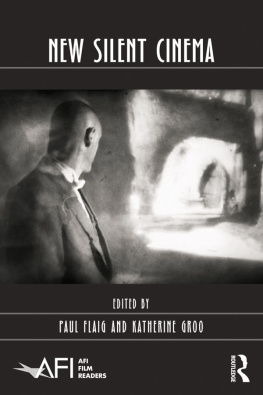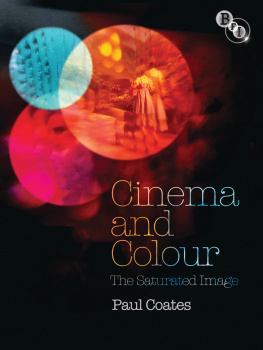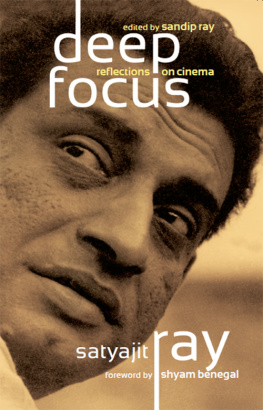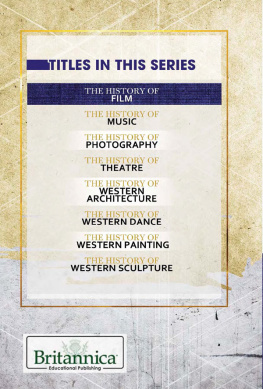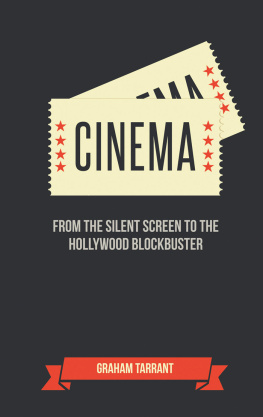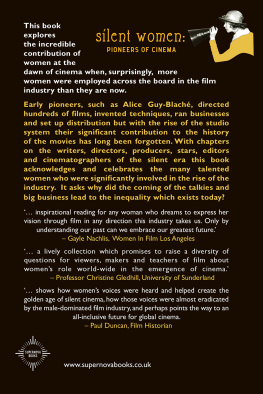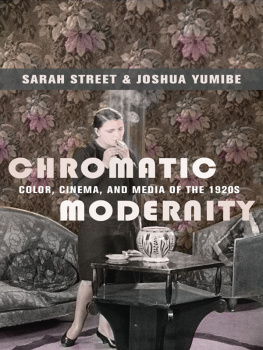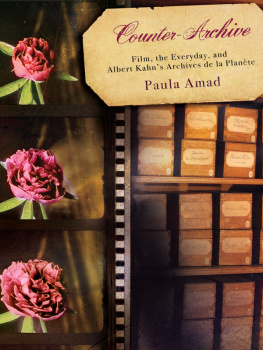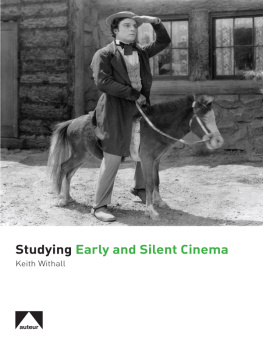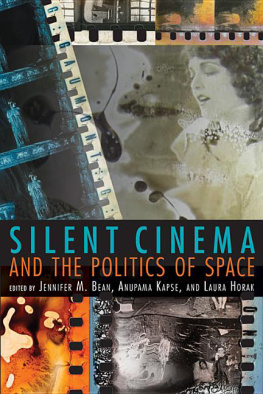New Silent Cinema
With the success of Martin Scorseses Hugo (2011) and Michel Hazanaviciuss The Artist (2011) nothing seems more contemporary in recent film than the styles, forms, and histories of early and silent cinemas. This collection considers the latest return to silent film alongside the larger historical field of visual repetitions and affective currents that wind their way through twentieth- and twenty-first-century visual cultures. Contributors bring together several fields of research, including early and silent cinema studies, experimental and new media, historical and archive theories, and studies of media ontology and epistemology. Chapters link the methods, concerns, and concepts of early and silent film studies as they have flourished over the last quarter century to the most recent developments in digital culture, recasting this contemporary phenomenon against key debates and concepts in silent film scholarship. An interview with acclaimed Canadian filmmaker Guy Maddin closes the collection.
Paul Flaig is Lecturer of Film and Visual Culture at the University of Aberdeen. His articles have appeared in Cinema Journal, Screen, a: the journal of culture and the unconscious, The Brecht Year Book as well as several edited collections.
Katherine Groo is Lecturer of Film and Visual Culture at the University of Aberdeen and Co-Director of the George Washington Wilson Centre for Visual Culture. Her articles have appeared in Cinema Journal, Framework, and Frames.
Previously published in the AFI Film Readers series
Edited by Edward Branigan and Charles Wolfe
Psychoanalysis and Cinema
E. Ann Kaplan
Fabrications: Costume and the Female Body
Jane Gaines and Charlotte Herzog
Sound Theory/Sound Practice
Rick Altman
Film Theory Goes to the Movies
Jim Collins, Ava Preacher Collins, and Hilary Radner
Theorizing Documentary
Michael Renov
Black American Cinema
Manthia Diawara
Disney Discourse
Eric Smoodin
Classical Hollywood Comedy
Henry Jenkins and Kristine Brunovska Karnick
The Persistence of History
Vivian Sobchack
The Revolution Wasnt Televised
Lynn Spigel and Michael Curtin
Black Women Film and Video Artists
Jacqueline Bobo
Home, Exile, Homeland
Hamid Naficy
Violence and American Cinema
J. David Slocum
Masculinity
Peter Lehman
Westerns
Janet Walker
Authorship and Film
David A. Gerstner and Janet Staiger
New Media
Anna Everett and John T. Caldwell
East European Cinemas
Anik Imre
Landscape and Film
Martin Lefebvre
European Film Theory
Trifonova Temenuga
Film Theory and Contemporary Hollywood Movies
Warren Buckland
World Cinemas, Transnational Perspectives
Nataa uroviov and Kathleen Newman
Documentary Testimonies
Bhaskar Sarkar and Janet Walker
Slapstick Comedy
Rob King and Tom Paulus
The Epic Film in World Culture
Robert Burgoyne
Arnheim for Film and Media Studies
Scott Higgins
Color and the Moving Image
Simon Brown, Sarah Street, and Liz Watkins
Ecocinema Theory and Practice
Stephen Rust, Salma Monani, and Sean Cubitt
Media Authorship
Cynthia Chris and David A. Gerstner
Pervasive Animation
Suzanne Buchan
The Biopic in Contemporary Film Culture
Tom Brown and Beln Vidal
Cognitive Media Theory
Ted Nannicelli and Paul Taberham
Hollywood Puzzle Films
Warren Buckland
Endangering Science Fiction Film
Sean Redmond and Leon Marvell
NEW SILENT CINEMA
EDITED BY
PAUL FLAIG AND KATHERINE GROO

First published 2016
by Routledge
711 Third Avenue, New York, NY 10017
and by Routledge
2 Park Square, Milton Park, Abingdon, Oxon OX14 4RN
Routledge is an imprint of the Taylor & Francis Group, an informa business
2016 Taylor & Francis
The right of the editors to be identified as the authors of the editorial material, and of the authors for their individual chapters, has been asserted in accordance with sections 77 and 78 of the Copyright, Designs and Patents Act 1988.
All rights reserved. No part of this book may be reprinted or reproduced or utilized in any form or by any electronic, mechanical, or other means, now known or hereafter invented, including photocopying and recording, or in any information storage or retrieval system, without permission in writing from the publishers.
Trademark notice: Product or corporate names may be trademarks or registered trademarks, and are used only for identification and explanation without intent to infringe.
Library of Congress Cataloging-in-Publication Data
New silent cinema / edited by Paul Flaig and Katherine Groo.
pages cm (AFI film readers)
Includes bibliographical references and index.
1.Motion picturesHistory and criticism.2.Silent filmsHistory and criticism.3.Motion picture filmPreservation.4.Experimental filmsHistory and cricism.5.Motion picture industryTechnological innovations.6.Mass mediaTechnological innovations.7.Digital mediaHistory21st century.8.Motion picture producers and directorsInterviews.I.Flaig, Paul, editor. II.Groo, Katherine, editor.
PN1995.N389 2015
791.4309dc23
2015010356
ISBN: 978-0-415-73525-4 (hbk)
ISBN: 978-0-415-73527-8 (pbk)
ISBN: 978-1-315-81929-7 (ebk)
Typeset in Spectrum
by Apex CoVantage, LLC
contents
paul flaig and katherine groo
katherine groo
brian price
an interview with paolo cherchi usai
catherine russell
jonah corne
yiman wang, university of california
an interview with professor rick altman
constance balides
joshua yumibe
paul flaig
jennifer lynn peterson
brianne cohen
brian r. jacobson
james leo cahill
rob king
a conversation with guy maddin about sances
paul flaig and katherine groo
At the 2012 Academy Awards, two films dominated the competition, both of which summoned the specters of silent cinema. Martin Scorseses Hugo (2011) and Michel Hazanaviciuss The Artist (2011) won four Oscars each, with the latter congratulated in Hollywoods trade press as the first silent movie in 83 years to claim [best picture]. Beyond their box office and industry successes, both works offer their own allegories for how we might remember films of the silent past amid the ascendancy of digital forms of production, exhibition, and restoration. Hugo illustrates the importance of early film preservation by turning to the figure of an elderly Georges Mlis, haunted by his prior cinematic achievements; The Artists title character, former movie idol George Valentin, embraces the future of sound film through the redeeming love of a talkies starlet. While Scorsese looks longingly to cinemas past through 3D glasses, Hazanavicius tells his Hollywood tale through the anachronistic conventions of 1920s American melodrama. Both films further share a cinephilic fondness for citing the genres, icons, and attractions of other moving-image eras.

